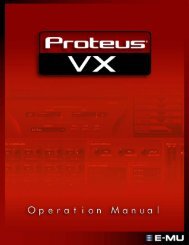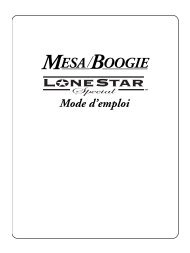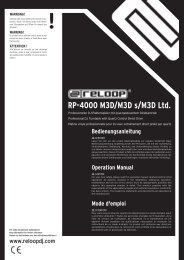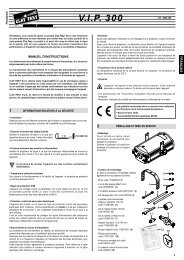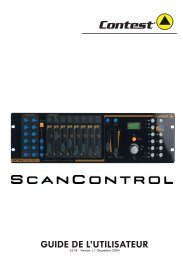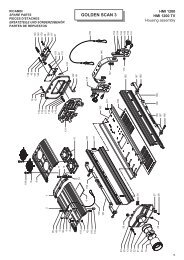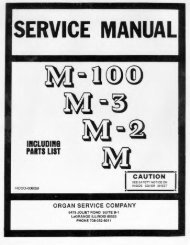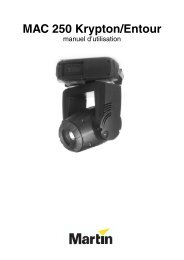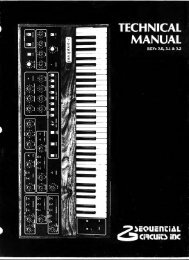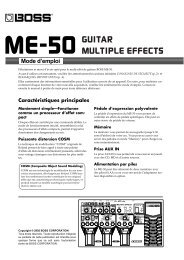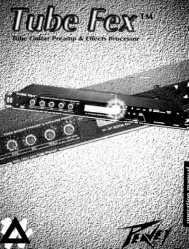Create successful ePaper yourself
Turn your PDF publications into a flip-book with our unique Google optimized e-Paper software.
The Algorithms and their ParametersSIZE sets the rate of buildup of diffusion after the initial period (which is controlledby DIFF). It also acts as a master control for RTIM and SPRD. The SIZE controlchanges a reverb sound from very large to very small. Generally, you should setthe SIZE control to approximate the size of the acoustic space you are trying tocreate, before adjusting anything else. The size in meters is roughly equal to thelongest dimension of the space. Moving SIZE while a signal is present maycause audible transients on critical material.SIZEThe apparent size of the space created is actually a combination of the settingsof the SIZE, SHAP, and SPRD controls. Small acoustic spaces are characterizedby a rapid buildup of diffusion. However, both small and large spacesfrequently have an uneven buildup of initial reverberation. This uneven buildupis controlled by the SPRD and SHAP controls.Random Hall and Feedback Pre-Echoes PagesThe Random Hall Pre-Echoes page and the Feedback Pre-Echoes page containfour pre-echo taps with delay and level controls. The taps are fed directly to theoutput wet signal rather than into the reverberator.Pre-echoes can best be understood by visualizing a stage where the earlyreflections are the sounds emanating from the rear and side stage walls directlyafter the sound from the stage. Usually the rear stage wall reflection is earlier andlouder than those from the two side walls. The pre-echoes are actually clustersof echoes, with the density of the cluster set by DIFF.The pre-echo delay parameters change the perceived locations of reflectingsurfaces surrounding the source. Level adjusts the loudness of the reflection.For each of the Lvl (Pre-echo level) parameters, there is a corresponding Dlyparameter. Each of these sets the delay time in ms for one of the pre-echoes.These are not affected by PDLY, so pre-echoes can be placed to occur beforethe reverberation starts.The Dly pre-echo delay parameters have a resolution of 2 milliseconds.The Lvl pre-echo level parameters have sixteen steps, calibrated in decibels.The Fbk feedback parameters (for Delays 3 and 4 only) are adjustable in 6%increments from -93% to +93%.Pre-Echo 1, one second maximum to left channel.DLY1, LVL1Pre-Echo 2, one second maximum to right channel.DLY2, LVL2Pre-Echo 3, 2.8 seconds maximum to left channel, with feedback.DLY3, LVL3, FBKk3Pre-Echo 4, 2.8 seconds maximum to right channel, with feedback.DLY4, LVL4, FBK44-7


